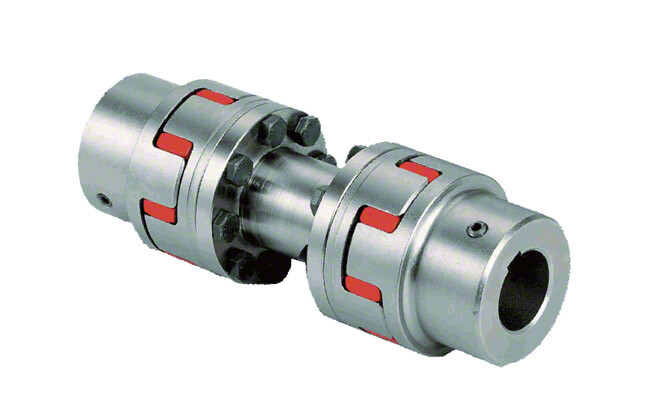Misaligned Shaft Coupling
Understanding Shaft Coupling
Shaft coupling is an essential component in mechanical transmission systems. It connects two shafts together to transmit power while accommodating misalignment and minimizing vibration.
Types of Shaft Misalignment
Shaft misalignment can be classified into three categories: angular, parallel, and axial misalignment. Each type poses different challenges and requires specific coupling solutions.
Angular Misalignment
Angular misalignment occurs when the shafts’ centerlines intersect but are not parallel. This type of misalignment can cause undue stress on the coupling components.
Parallel Misalignment
Parallel misalignment happens when shafts are parallel but not in the same line. This misalignment can lead to increased wear and tear on the coupling and connected equipment.
Axial Misalignment
Axial misalignment refers to a situation where the shafts shift along the axis. This can generate thrust loads that may affect the performance of the coupling.
Flexible Couplings
Flexible couplings are designed to accommodate misalignment and transmit torque efficiently. They provide elasticity and compensate for minor misalignments.
Rigid Couplings
Rigid couplings are used when precise shaft alignment is critical. They do not allow any relative motion between the shafts they connect and are typically used in applications with perfect alignment.
Significance of Shaft Coupling in Machinery
Shaft coupling plays a vital role in ensuring smooth and efficient power transmission in machinery. It helps in reducing vibration and noise, prolonging equipment life.
Materials Used in Shaft Couplings
Shaft couplings are made from various materials like steel, aluminum, and composites. Each material offers unique properties tailored to specific applications.
Applications of Shaft Coupling
From automotive to industrial machinery, shaft couplings are ubiquitous in various sectors. They are crucial in applications where precise torque transmission is required.

Challenges in Shaft Coupling
Challenges such as misalignment, backlash, and wear can affect the performance of shaft couplings. Proper selection and maintenance are key to overcoming these issues.
Maintenance of Shaft Couplings
Regular inspection and lubrication are essential for maintaining the efficiency of shaft couplings. This helps in identifying potential issues early and ensuring longevity.
Innovations in Shaft Coupling Technology
Advancements in materials and design have led to the development of more robust and efficient shaft couplings. Innovations include smart couplings that monitor performance in real-time.
Choosing the Right Shaft Coupling
Selecting the appropriate shaft coupling involves considering factors such as torque requirements, misalignment tolerance, and environmental conditions. This ensures optimal performance and reliability.
Future Trends in Shaft Coupling
The future of shaft coupling lies in the integration of smart technologies and the use of advanced materials. These trends aim to enhance performance and reduce maintenance costs.
What are the three types of coupling?
Couplings can broadly be categorized into three types: rigid couplings, flexible couplings, and fluid couplings. Each type serves specific purposes and applications.

What coupling is used to connect two shafts?
Several parameters must be considered when connecting two shafts:
- Torque Transmission Capacity: The coupling must be able to handle the maximum torque that will be transmitted.
- Misalignment Tolerance: The coupling should compensate for any misalignment between the shafts.
- Environmental Conditions: Factors such as temperature, humidity, and exposure to chemicals must be considered.
- Material Compatibility: The materials of the coupling and shafts should be compatible to avoid corrosion or wear.
- Speed Requirements: The coupling should be suitable for the operational speeds of the shafts.

What are the two general types of shaft couplings?
The two general types of shaft couplings are rigid couplings and flexible couplings. Rigid couplings are used in applications with precise alignment, while flexible couplings accommodate misalignment and reduce vibration.
About HZPT
HZPT, located in Hangzhou, Zhejiang Province, is a modern enterprise integrating R&D, production, and international trade. We adhere to the core values of “integrity” as our business philosophy, fostering unity, progress, and innovation. We focus on the research and innovation of coupling products and have a broad business footprint across Asia, Europe, Africa, and North America, striving to become a globally influential international group.
Our company specializes in producing a wide range of coupling products, including drum couplings, spring pin couplings, serpentine spring couplings, universal couplings, star couplings, expansion couplings, diaphragm couplings, and tire couplings. We have a complete and scientific quality management system and our own technology development and testing department, with certifications like CQC, ISO, and CE. We offer excellent sales service and technical support to our clients, cooperating with hundreds of enterprises under the philosophy of “people-oriented, customer first” to grow together.

Why Choose Our Shaft Couplings?
- Expertise in Manufacturing: Our extensive experience in coupling production ensures high-quality products tailored to your needs.
- Advanced Technology: We utilize state-of-the-art technology and materials to produce efficient and durable couplings.
- Comprehensive Quality Management: Our strict quality control processes guarantee reliability and performance.
- Global Reach: Our presence in multiple continents allows us to serve a diverse client base effectively.
- Customer-Centric Approach: We prioritize customer satisfaction, offering personalized support and services.